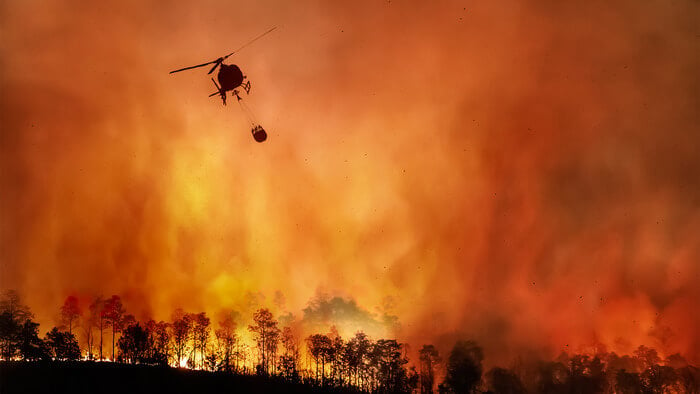A new study from the University of California, Riverside (UCR) highlights the importance of reducing both aerosol pollution and greenhouse gases like carbon dioxide simultaneously to achieve cleaner air, fewer forest fires, and less severe climate change. The study, published in the journal Science Advances, found that boreal forests in the northern hemisphere are particularly vulnerable to the negative effects of cleaning up aerosol pollution, including forests in Canada, Alaska, northern Europe, and northern Russia.
Aerosols, which are small particles like dust, sea salt, and airborne chemicals produced by fossil fuel combustion, are responsible for poor air quality. The UCR study showed that reducing levels of human-made aerosols causes an increase in wildfires, especially in northern hemisphere forests.
The Dual Impact of Aerosols and Greenhouse Gases
“Cleaning up the air, which is something we all want to do, will accelerate global warming and also impact wildfires unless we also reduce emissions of greenhouse gases like methane and carbon dioxide,” said Robert Allen, UCR climatology professor and lead study author. The warming effect of atmospheric carbon dioxide levels is well known, with the burning of fossil fuels for heat, electricity, and transportation adding increasing levels of CO2 into the atmosphere, acting like a blanket and preventing heat from leaving Earth.
Heat waves and drought occur more frequently in today’s climate than they did 50 years ago, causing plants to die and become kindling for wildfires. “When you dry out the soil, that also dries out plants, which makes them more combustible,” Allen said. “Warming contributes to wildfires.”
The Role of Plants in the Climate-Wildfire Relationship
The study found that both CO2 and aerosol reductions cause warming and create large increases in forest fires, but reducing aerosol emissions creates more fire. As plants convert light into food through photosynthesis, they use CO2. With more CO2 in the atmosphere, plants don’t have to keep the pores in their leaves open for as long to get the CO2 they need, allowing them to retain more water and draw less from the soil.
Under aerosol mitigation, plants dry out more as fewer cooling aerosols make conditions warmer, causing water to evaporate more from plant pores. As the plants lose water, they have to draw more of it from the soil, leading to drier soil.
Human-made aerosols have a short lifespan, with Allen noting that “if you stopped aerosol emissions today, they’d fall out of the atmosphere in a week.” Globally, there has been progress on reducing sulfate aerosols resulting from sulfur dioxide emissions, with the U.S. and Europe significantly decreasing coal combustion and remaining coal-fired power plants using “scrubber” technology to prevent these chemicals from forming. “This is good for air quality but potentially bad for the climate,” Allen said.
One faster way to offset the warming induced by aerosol mitigation would be to make significant reductions in methane emissions from agriculture, fossil fuels, and landfill waste. Methane warms the planet 86 times more powerfully than carbon dioxide but has a much shorter half-life of about a decade, compared to CO2 which can potentially last for thousands of years.
More than 150 countries have signed a pledge to reduce methane emissions by at least 30 percent from 2020 levels by 2030, representing more than half of all human-made methane emissions. “We are on the right trajectory with regards to aerosols and methane. I still have hope, but there is a narrow window of time to make this happen and avoid the worst projected climate impacts,” Allen said. “This decade is the important one.”


